Pictures of Angiosperms
Grown for its purple, white, or yellow flowers, the columbine prefers sunny locations in well-drained soils. The hardy perennial is colorful when not in bloom, as well; in autumn, its leaves turn rich colors.
Common African Violet - The common African violet, a native of eastern Africa and not a violet at all, has been extensively cultivated for use as a houseplant. Numerous cultivars are available in a variety of colors, including red, pink, white, purple, and blue.
 Common Cultivated Onion
Common Cultivated Onion
Common African Violet - The common African violet, a native of eastern Africa and not a violet at all, has been extensively cultivated for use as a houseplant. Numerous cultivars are available in a variety of colors, including red, pink, white, purple, and blue.
The cultivated onion is an edible, summer-flowering, perennial bulb preferring sunny locations with well-drained soils. Cultivated onions grow to heights of 30 to 70 cm (12 to 28 in) and produce pink or white flowers.
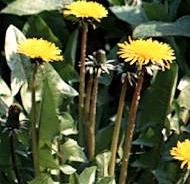 Common Dandelion
Common Dandelion
The flower of the common dandelion, which belongs to the genus Crepis, is not a single flower but rather a composite made up of a large number of very small flowers. Although usually considered a troublesome weed, the dandelion’s leaves are edible if collected early in the spring before they become bitter.
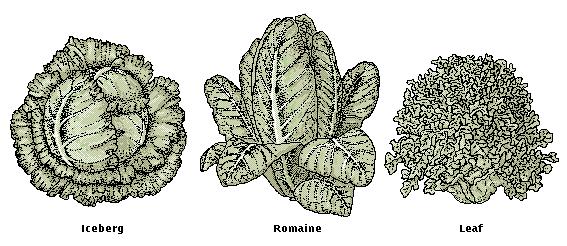 Common Garden Lettuces
Common Garden Lettuces
The leaves of iceberg lettuce, the crisp, juicy head lettuce that accounts for the bulk of commercially grown lettuce in the United States, curl around its core. Romaine lettuce contains more nutrients than iceberg, but is grown less often commercially because its long, tender leaves damage easily. Leaf lettuce, easiest to grow in the garden, does not form a head, but has free, loose leaves. Some varieties are red. These varieties differ in taste as well as in shape and texture.
 Common Lilac
Common Lilac
The common lilac is one of a group of deciduous trees and shrubs grown primarily for their extremely fragrant flowers. Originating in temperate Eurasia, the lilac is now cultivated in temperate regions of the world in sunny locations with thick, fertile, preferably alkaline soils.
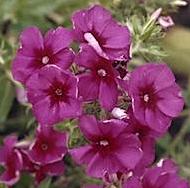 Common Phlox
Common Phlox
The common phlox, cultivated for its bright flowers, grows best in fertile, moist, well-drained soils.
 Common Primrose
Common Primrose
Some members of the primrose family yield medicinal chemicals, or dyes, but most species are used as house plants or in rock gardens. The common primrose is popular for its delicate flowers, which bloom on erect, leafless stalks.
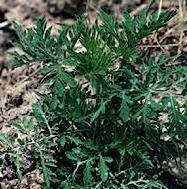 Common Ragweed
Common Ragweed
Common ragweed, found throughout the United States and Canada, only develops and produces seeds in geographic areas where the amount of daylight is 14.5 hours or less. In more northern areas where the amount of daylight may not drop to below 14.5 hours until late August or early September, ragweed will not be able to produce flowers and seeds before the first frost.
 Coralbells
Coralbells
 Coralbells
CoralbellsNative to the southwest United States and Mexico, coralbells is now widely cultivated by breeders who have developed hybrids with white, crimson, bluish, or scarlet flowers. This plant blooms from June through September and attracts hummingbirds. When cut, coralbells lasts well in flower arrangements.
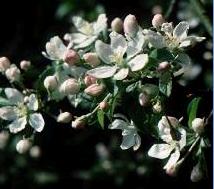 Crab Apple Tree
Crab Apple Tree
A deciduous spring-flowering species, the crab apple tree is cultivated for its fruit, flowers, and foliage. A number of varieties are available, ranging in height from 0.9 to 112 m (3 to 40 ft), all of which prefer sunny locations in well-drained soils.
 Crimson Bottlebrush
Crimson Bottlebrush
 Crimson Bottlebrush
Crimson BottlebrushThe crimson bottlebrush, a member of the Callistemon genus, is cultivated as an ornamental shrub worldwide and can grow as tall as 8 m (26 ft). The distinctive crimson flowers, which resemble brushes used to clean bottles and test tubes, can be up to 10 cm (4 in) wide.
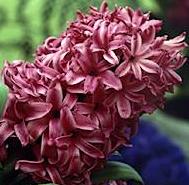 Cultivated Hyacinth
Cultivated Hyacinth
The densely flowered, spiky cultivated hyacinth, Hyacinthus orientalis, looks very little like the Mediterranean plant from which it was bred.
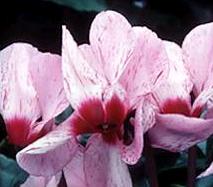 Cyclamen
Cyclamen
A perennial decorative plant cultivated for its pendulous white, pink, or red flowers, the cyclamen flourishes in moist, rich soil and moderate temperatures. Cyclamens grow tubers, but the tubers are rarely used to propagate the plant because they do not yield specimens as free-flowering as those raised by seed. Cyclamens demand great care in cultivation because of their susceptibility to root rot and other diseases.
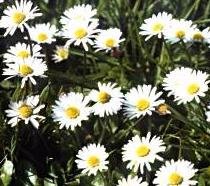 Daisies in Bloom
Daisies in Bloom
The daisy, a carpeting, slow-growing perennial flower, grows to a height of 15 to 20 cm (6 to 8 in) with a flower width of 2.5 cm (1 in). A commonly cultivated garden flower, daisies are also popular in the floral industry.
 Delphinium
Delphinium
 Delphinium
DelphiniumThe classic blue delphinium has been hybridized to produce colors ranging from white to red. The variety pictured here is called Mighty Atom. Wild species may contain poisons dangerous to grazing animals.
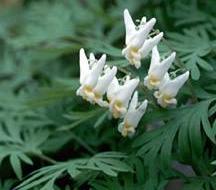 Dutchman's Breeches
Dutchman's Breeches
The distinctive flowers of Dutchman’s Breeches, a native of the woodlands of eastern North America, resemble trousers hung out to dry. This perennial wildflower grows from small, potatolike tubers and can reach 25 cm (10 in) in height. Populations of Dutchman’s Breeches are dwindling because of overcollecting for floral arrangements.
 Edelweiss
Edelweiss
Clusters of star-shaped edelweiss, Leontopodium alpinum, bloom in spring or early summer. The herb is native to the mountains of Asia and Europe, although it can be cultivated in cool climates elsewhere.
Comments